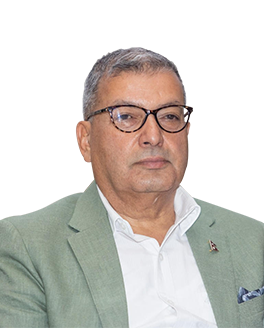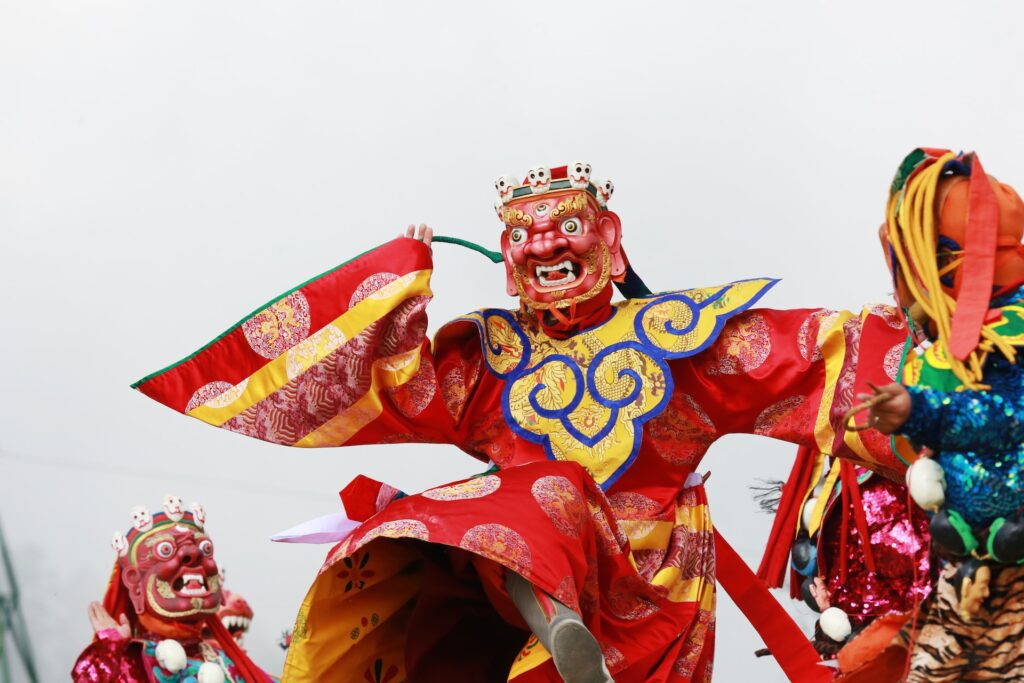Historic Central Bhutan Tour
Historic Central Bhutan Tour

Talk With Expert
- +977-1-5591234 / 9851104568
- info@prestigeadventure.com / pdamber@yahoo.com
OVERVIEW
This in-depth cultural tour offers a rare opportunity to leisurely enjoy the different customs and cultures of Bhutan’s Western and Central Valleys. Highlights include the Ta Dzong Museum, Rimpong Dzong and the infamous Taktsang (Tiger’s Nest) Monastery in the beautiful Paro Valley, the National Memorial Chorten, the 12th-century Changangkha Temple and the National Library displaying ancient scriptures in Bhutan’s capital, Thimphu, and after crossing Dochula at an altitude of 3,050 m. Passing with breathtaking views of the Himalayas, trek to the subtropical Punakha Valley with Punakha Dzong and the astonishing Chimi Lhakang, the temple of the “Mad God”. Continue to the central districts of Trongsa, birthplace of the monarchy, and Bumthang Valley, Bhutan’s spiritual center with Jambay Lhakhang and the 7th-century Kurje Lhakhang with the stone footprints of Guru Rimpoche. The tour then returns west to the Gangtey/Phobjika glacial valley, winter home of the rare black-necked crane.
ITINERARY
-
Day 01: Arrive Kathmandu & transfer to hotel - International guest house.
-
Day 02: Arrive Paro (By Druk Air flight):
Operator will receive you at the airport and drive you the short distance to the hotel. After Tea, drive to the ruins of the Drukgyal Dzong 16 km up the valley built in 1647 by the great Shabdrung Ngawang Namgyal, father and unifier of medieval Bhutan, the dzong was destroyed by accidental fire and left in ruins as an evocative reminder of the great victories it was built to commemorate. Explore the ramparts and on a clear day experience an unforgettable view of Mt. Chomolhari (7,314 m). On the way back, visit Kichu Lhakhang, built in 659 A.D by the Tibetan king Srongsen Gampo. Dinner and overnight in hotel.
-
Day 03: Paro, Excursion to Taktsang Monastery:
A very special day, with an excursion to view the spectacular Taktsang (Tiger’s Nest) monastery – After breakfast a short drive takes us to Satsam Chorten, from there a 2 hour walk till the view point of the monastery. The trail climbs through beautiful pine forest, many of the trees festooned with Spanish moss, and an occasional grove of fluttering prayer flags. We stop for a rest and light refreshments at the Taktsang Jakhang (cafeteria) and then walk a short distance until we see, clearly and seemingly within reach, Taktsang monastery. The primary Lhakhang was built around Guru Rimpoche’s meditation cave in the 1684by the Penlop of Paro Gyaltse Tenzin Rabgay, this incredible monastery clings to the edge of a sheer rock cliff that plunges 900 meters into the valley below. Legend has it that Guru Padmasambhava, the tantric mystic who brought Buddhism to Bhutan, flew here on the back of a flying tiger, Dorji Drolo, said to be his favourite consort. After Lunch, visit Ta Dzong (built in1656 and renovated in 1968), an ancient watchtower, which now houses the National Museum. Below the museum is the Paro Rimpung Dzong (literally meaning “Heap of Jewels”, built in 1646 by Shabdrung Ngawang Namgyal, the centre of civil and religious authority in this valley. A short walk takes you to the base of the dzong and across a traditional cantilevered, covered bridge. In the evening, drive to Thimphu. Dinner and Overnight in hotel.
-
Day 04: Thimpu Sightseeing:
The day begins with a visit to the National Memorial Chorten (1974) built in honor of our late King Jigme Dorji Wangchuk and the Dupthop Lhakhang one of the few surviving nunneries in Bhutan. We then visit the National Library, stocked with ancient Buddhist manuscripts, and the Painting School where traditional art is still kept alive through instructions in the art of painting Thangkas (sacred Buddhist religious scrolls). After lunch we drive to the Traditional Medicine Institute where medicines are prepared according to ancient practices. Other highlights include a visit to the Tashichho Dzong, seat of the national government and the Central Monastic Body, including the summer residence of the Je Khenpo (Chief Abbot of Bhutan). We drive to Simtokha Dzong; the oldest Dzong of Bhutan built by Shabdrung in 1627 and finally visit the Handicrafts Emporium followed by shopping for souvenirs in the shops of Thimphu. Overnight in hotel.
-
Day 05: Thimpu - Punakha (72 Kms, 3 hours drive):
After breakfast, Drive to Punakha via Dochula pass. If the weather is clear, we stop for a while at Dochula pass to view Higher Himalayas. On the way, visit Chime Lhakhang, which was built by Lama Drukpa Kuenley. He subdued the demons with his “Magical Thunder bolt”. The Temple is also known as “the Temple of Fertility”. Lunch at Punakha.
After lunch, visit Punakha Dzong built in 1637 by Shabdrung Ngawang Namgyal and is situated between Pho Chu (Male River) and Mo Chu (Female River). For many years until the time of the second king, it served as the seat of the Government. The construction of the Dzong was foretold by Guru Rimpoche, who predicted, “…a person named Namgyal will arrive at a hill that looks like an elephant”. There was a smaller building here called Dzong Chu (Small Dzong) that housed a statue of Buddha. It is said that Shabdrung ordered the architect, Zowe Palep, to sleep in front of the statue, while Palep was sleeping; the Shabdrung took him in his dreams to Zangtopelri and showed him the palace of Guru Rimpoche. From his vision, the architect conceived the design for the new Dzong, which in keeping with the tradition, was never committed to paper. The Dzong was named Druk Pungthang Dechen Phodrang (Palace of Great Happiness). The war materials captured during the battle with Tibetans are preserved here. Punakha is still the winter residence of Je-Khenpo and King Jigme Dorji Wangchuk convened the new national Assembly here in 1952. Overnight in hotel. -
Day 06: Punakha - Gangtey - Trongsa:
We start early today. After breakfast drive to Trongsa via. Gangtey. Enroute sightseeing in the valley of Wangdiphodrang, it includes: visit to Wangdiphodrang Dzong (from outside) built in 1638. Legend relates that as the people were searching for the site of the Dzong; four ravens were seen flying away in four directions. This was considered auspicious sign, representing the spread of Buddhist religion to the four points of the compass. The Dzong is situated at the confluence of Mo Chu and Tang Chu rivers. Drive further to Gangtey. While in Gangtey, visit Gangtey Gompa. Gyaltse Pema Thinley, the grandson and mind reincarnation of Pema Lingpa founded the Temple in 1613, and Tenzin Legpai Dhendup, the second re-incarnation, built the temple. The present Abbot, Kunzang Pema Namgyal is the ninth re-incarnation. It is a Nyingmapa monastery and is affiliated to other Nyingmapa monasteries including Tamshing in Bumthang. Explore Phobjikha valley, famous for the Black Necked Cranes during winter. Packed lunch will be served at Gangtey. After Lunch, drive to Trongsa. Visit Trongsa Dzong, the most impressive dzong in Bhutan, built in its present form in 1644 by Chogyal Minjur Tempa, the official who was sent by Shabdrung to unify eastern Bhutan and enlarged at the end of the 17th century by Desi Tenzin Rabgay. Trongsa Dzong is the ancestral home of the present Royal Family and first two hereditary kings ruled Bhutan from this Dzong. Then Visit Ta Dzong, an ancient watch tower. The chapel inside the Ta Dzong is said to be dedicated to the Trongsa Penlop Jigme Namgyal. Overnight in hotel.
-
Day 07: Trongsa - Bumthang:
After breakfast, drive to Bumthang. Lunch at Bumthang. After lunch, visit Jakar Dzong, which literally means “The Castle of White Bird”. The current structure was built in 1667 and is said to be the largest Dzong in Bhutan and then visit Lamey Goemba, a large palace and monastery built in 18th century by Dasho Phuntsho Wangdi. Visit Jambay Lhakhang said to have been built by King Srongsen Gampo of Tibet in the year 659 on the same day as Kichu Lhakhang in Paro. The temple was visited by Guru Rimpoche during his visit to Bumthang and was renovated by Sindhu Raja after Guru Rimpoche restored his life force. Under the temple is said to be a lake in which Guru Rimpoche hid several Terma. In October one of the most spectacular festival, “Jambay Lhakhang Drup” is staged here. Overnight in hotel.
-
Day 08: Bumthang Sightseeing:
After breakfast, visit Kurjey Lhakhang that is named after body print of Guru Rimpoche, built in 1652 by Minjur Tempa. Visit Tamshing Lhakhang (Temple of the good message), established in 1501 by Pema Lingpa and is the most important Nyingmapa temple in the kingdom. After lunch, visit Membartsho (Literally means “Burning Lake”), a short distance up the road leading to Tang valley. The Terton Pema Lingpa discovered several of Guru Rimpoche’s hidden Terma / relics here. In the evening, visit Mathra factory & Cheese Factory. Overnight in hotel.
-
Day 09: Bumthang - Wangdi Phodrang:
Early breakfast, drive to Wangdiphodrang. Packed lunch will be served on the way. Overnight in hotel.
-
Day 10: Wangdiphodrang - Thimphu:
After breakfast, drive to Thimphu. After lunch, Excursion to Tango Monastery. Dinner and overnight in hotel.
-
Day 11: Departure:
Early morning, drive to Airport and Fly to Kathmandu and arrive Kathmandu airport and transfer to hotel.
-
Day 12: Departure final destination.
COST
WHAT IS INCLUDED
-
- 2 nights hotel in Kathmandu with best and breakfast
- Full board tour in Bhutan as fallow itinerary, hotel, breakfast, lunch, dinner
- English speaking guide
- All transfer by car, jeep or mini bus as depend on group sizes
- Well come dinner in Kathmandu
- USD 20 as visa fee, USD 10 as Tourism Development Fund in Bhutan is includes in package.
WHAT IS EXCLUDED
-
- Visa fee in Nepal
- Airport tax in Nepal and Bhutan (Euro 16.00 Approximately)
- Persona expenses
- Bar bills and beverage
- Tips

